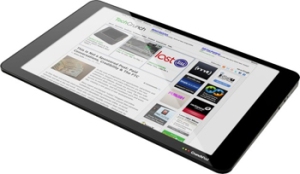I’ve been working on a presentation I will give next month called “Photojournalism in the age of the Internet.” In the process, I’ve been thinking a lot about how much photojournalism has changed for newspaper photojournalists.
With the rise of the Internet, traditional photojournalists have been faced with a dilemma. Stay a purist to the craft by clinging to their still cameras or embrace the change by venturing out into the online world by adding video and audio to their storytelling toolboxes.
Back in 2006, I was invited to speak about newspaper multimedia at The Southern Short Course in News Photography conference. During some free time, I dropped in on a panel discussion about the future of photojournalism. The panel was made up of a stellar group of veteran, but mostly old-school photojournalists. The room was packed, so I stood in the side-shadows taking in the conversation.
An audience member asked whether video was something she needed to learn. After a pause, one panel member said, “I don’t know, why don’t you ask Colin? He’s standing over there.” All 200 heads turned and looked at me.
My answer made many people squirm in their seats. “Yes,” I said. “You need to learn video. You need to add audio to your pictures and yes you’ll need to embrace change.”
I felt a little uneasy as the questions kept coming at me and not the panel. I could sense that many people thought I was crazy. I started to see the panic in some people’s eyes. One woman volunteered that her editor at a small newspaper was requiring her on a single story to write it, take the photographs and produce a video. An uneasy murmur rose in the room. I could tell, my belief that video was important to the future of online journalism, was a tough sell in this room of die-hard photojournalists.
Flash-forward some four years. Whereas, in 2006 I was an anomaly, now most newspaper photojournalists produce some sort of multimedia, be it audio slideshows or video. J-school programs have finally stopped wallowing in the past and are junking old curriculums for new ones that are multimedia focused.
Looking at the troubling position newspapers are in, one must wonder if all this talk of multimedia storytelling really matters. After all the rounds of layoffs, who has time to shoot video?
There are some days I wonder myself, but I quickly shake off the feeling. I have to remind myself that newspapers are awash in transition. As we near rock bottom, the economy is starting to show some life. I can only hope for some stability to return to the newspaper industry.
Today, if I faced a similar crowd like the one in 2006, I would say the same thing. Learn video storytelling, master audio gathering and editing. Embrace change. The future, I would tell them, is not in the printed-paper, but in the digital delivery that will eventually replace it.
Photojournalists are a curious lot. They are independent, visual thinkers. Most take photographs because they love to shoot and share their work. They know they’ll never get rich on this career choice, but instead find happiness in the people they meet and photograph along the way.
The disruption that online journalism has placed on the photojournalist, whose career choice was based solely on taking still photos for newspapers, has been gut wrenching. “That’s not what I signed up for,” is what I often see posted in forums dealing with the changes facing photojournalists today.
The technology being deployed is slowly changing the definition of what photojournalism is. Newspaper photojournalists are becoming multifaceted visual journalists who can now use a variety of formats to tell a story.
As lean as newspapers are running these days, I think we’re about to get a dose of “oh shit” real soon. Circulation is not coming back. Just look at the downward trend of the last forty years as proof of that. Our readership is dying off and screenagers are just not interested in buying the dead trees we’re selling. I think the last transition will be the messiest. More talented journalists will leave the profession. More photojournalists will become freelance wedding photographers.
What awaits those few who make it across the proverbial burning bridge is anyone’s guess. If I could flash forward four years, I can visualize in my crystal ball a world where newspapers have transitioned most of their subscriber base to the touch screen tablet platform that has suddenly gone white-hot with advertisers. I predict these multimedia centric devices will need a steady stream of visual content. And guess what? Visual journalists, who honed their multimedia skills during newspapers darkest hours, will be there to gladly step up and help feed the daily digital beast.






